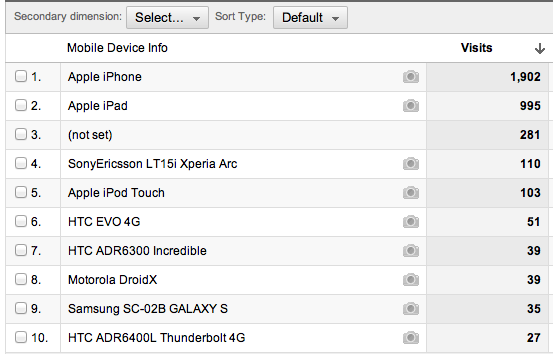 If you haven’t given your mobile marketing strategy much thought, now’s the time. A new report from Forrester indicates that one billion people will own smartphones by 2016—surely reason enough to set your sights on mobile and integrate mobile marketing strategies into your overall marketing strategy.
If you haven’t given your mobile marketing strategy much thought, now’s the time. A new report from Forrester indicates that one billion people will own smartphones by 2016—surely reason enough to set your sights on mobile and integrate mobile marketing strategies into your overall marketing strategy.
It’s predicted that 350 million workers will use smartphones by 2016, 200 million of whom will take their own devices to the workplace, writes Brian X. Chen for the New York Times’ Bits blog.
The continued rise in smartphones and tablets isn’t surprising—after all, these handheld devices are becoming more and more prevalent as consumers continue to crave access and connectivity on the go. Yet the sheer number of phones is somewhat staggering, and underscores the fact that companies without a mobile marketing strategy are, well, just not paying attention.
When it comes to mobile marketing, companies should think beyond simply optimizing their websites for mobile viewing. You should be thinking about every part of the customer experience and what they need when they come to your site. Then, you should serve that up. Maximizing opportunities are all about maximizing user experience and when it comes to devices, user experience is even more critical.
A mobile strategy is no different than any other marketing plan; you need to think through what you want your mobile presence to accomplish, your goals and what sort of tools and infrastructure you need to implement in order to achieve those goals. Most importantly, you need to think about what your customers want. And then deliver it.
Mobile is not yet another device for your IT team to support with some midget version of your website. Mobile is about a huge shift in engagement. The effective use of mobile is understanding that your customers and prospects are just like the rest of us—and their smartphones are omnipresent, and within arm’s reach (if not closer). When they want something, they don’t wait to get home in front of their computers, they surf the web straight from the palm of their hands.
Context-aware apps, rich mobile apps that make life simpler, things that save time, location based apps, augmented reality—all the things that make life easier, serve up convenience, entertainment, information and solutions for consumers on the go—those are the mobile solutions that make sense. And those are the new rules of customer engagement.
As the mobile frontier continues to evolve, limitless opportunities present themselves to businesses that are invested in delivering a new level of service and engagement to consumers. And if mobile marketing isn’t already on your immediate radar screen, consider this a gentle nudge to start defining and creating your brand’s mobile strategy. On second thought, consider this a swift kick in the derrière and get going.
Need more convincing? Look at your web analytics on a monthly basis (see above) and make note of how many visits your site is getting from mobile devices, start. Watch those numbers grow on a monthly basis (and they will) and let that be the incentive for getting your mobile act together.
How is your business or brand approaching mobile marketing? If you have to think about it for more than a nanosecond, that’s too long.
